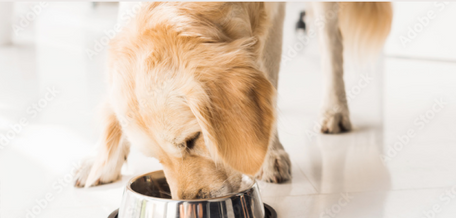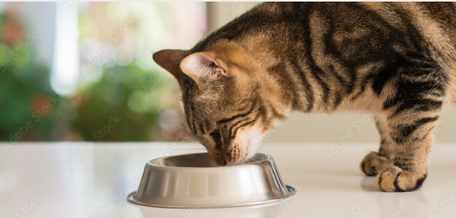
At BJ's Raw Pet Food, we are passionate about helping dog owners provide the best possible nutrition for their canine companions. Since our inception as a raw food company, one of the most common questions we’ve been asked is, "How much raw food should I feed my dog?"
As more pet parents discover the benefits of raw feeding, it's essential to understand that each dog is unique, with individual nutritional needs based on factors such as age, size, activity level, and overall health. Transitioning to a raw diet can be an exciting journey, but it's natural to feel overwhelmed when determining the correct portion sizes for your pup.
This quick guide will explain the factors affecting how much raw food you should give your dog, give some general guidelines on raw feedings, and show you how to use our handy raw feeding calculator.
Why Switch Your Dog Over to a Raw Food Diet?
Before we dive into the specifics of how much raw food to feed your dog, let's quickly recap why you might want to make the switch in the first place. A raw diet can offer numerous benefits for your beloved pet, including:
Improved digestion: A study found that dogs eating kibble were 29% more likely to develop gastrointestinal problems than dogs that mostly ate raw foods. Raw diets are easier for dogs to digest, leading to better nutrient absorption and fewer digestive issues.
Healthier skin and coat: Raw diets are rich in omega-3 fatty acids, often promoting a shiny, healthy coat and reducing skin irritation.
Increased energy levels: With a diet that closely mimics what dogs would eat in the wild, many pet parents notice an increase in their dog's vitality and enthusiasm.
Better dental health: Chewing on raw bones and meat can help maintain strong teeth and healthy gums, reducing the risk of dental problems.
While these benefits are compelling, you must ensure you feed your dog the right amount of raw food to maintain a balanced diet. But there’s not a one-size-fits-all answer. So, let’s look at the fundamental aspects influencing how much raw food to give them.
Factors Affecting How Much Raw Food to Feed Your Dog
Just like humans, every dog has unique nutritional needs. To determine the right amount of raw food for your furry friend, it's essential to consider several key factors:
Age: Puppies, adults, and senior dogs have different caloric and nutrient requirements. Puppies need more food relative to their body weight to support their rapid growth and development, while senior dogs may require fewer calories to maintain a healthy weight.
Activity level: A dog's activity level plays a significant role in determining its caloric needs. Highly active dogs, such as working or athletic breeds, will require more food to fuel their energy expenditure than more sedentary dogs.
Current weight and body condition: Your dog's current weight and body condition are crucial factors in determining how much raw food to feed. Overweight dogs may need a calorie-restricted diet to help them shed excess pounds, while underweight dogs may require more food to reach a healthy weight.
Health issues or special needs: Dogs with specific health conditions, such as diabetes, food allergies, or gastrointestinal disorders, may have special dietary requirements. If that’s the case for your pup, then it’s worth consulting with your veterinarian to receive tailored advice regarding your raw feeding plan.
General Raw Feeding Guidelines for Dogs
When transitioning your dog to a raw food diet, it’s helpful to understand the general guidelines for different life stages and special needs. Here's a breakdown of what you need to know.
Raw feeding puppies
Puppies require more food relative to their body weight to support their rapid growth and development. Generally, feed your puppy about 2-3% of their expected adult weight or 10% of their current weight, divided into three small meals a day. Keep in mind that puppy nutrient requirements can vary by breed, so consult with your veterinarian for more personalized advice.
Adult Dogs
For adult dogs at an ideal weight, portion about 2-2.5% of their body weight daily. This can be split into two meals. However, activity levels and metabolism can influence the exact amount needed. It's a good idea to monitor your dog's weight and adjust their food intake accordingly to maintain a healthy body condition.
Senior Dogs
As dogs age, their metabolism tends to slow down, and they may become less active. To prevent unwanted weight gain, senior dogs should consume around 1.5% of their ideal adult weight per day. This reduced portion helps maintain a healthy weight while still providing essential nutrients. But keep an eye on your senior dog's body condition and adjust their food intake as needed.
Dogs with Special Needs
Dogs with special needs, such as pregnant or nursing mothers, may require increased caloric intake to support their unique demands. Pregnant dogs should consume about 5-10% more food than their usual adult portion by the end of their pregnancy, while nursing mothers may need up to 25% more than their regular intake.
Dogs with specific health conditions or those needing to lose weight may require specialized feeding plans. Always consult your veterinarian if you need a tailored raw feeding regimen for your dog's needs.
Raw Food for Dogs Portion Size Calculator
Fortunately, at BJ’s Raw Pet Food, we’ve taken some of the guesswork out of the equation for you by creating a handy raw feeding calculator for dogs.
As we’ve mentioned, there’s always a little trial and error as all dogs' needs are slightly different, even if you have two of the same breed, age, and gender. However, our calculator takes into account the best practices and guidelines from above to give you a daily portion size that should be perfect based on your dog’s lifecycle stage, current weight, and your desired feeding goals.
Feel free to try it here: Find Your Perfect Daily Raw Food Portion Size
Raw Feeding Calculator Example
Let's run through a quick example to give you a better idea of how much raw food your dog needs on a daily basis.
Sadie is a three-year-old Boxer dog with a current weight of 60 lbs. As an adult dog looking to maintain that weight, our calculator suggests that Sadie should have roughly 19.2 oz of raw food per day.
While she may need an ounce or two on either side of that estimate, this figure should serve as an excellent starting point for her raw feeding journey.
Embark on Your Raw Feeding Journey Today
In this guide, we've explored the numerous benefits of a raw diet and delved into the key factors influencing how much raw food to feed your dog, including age, activity level, current weight, and body condition.
We've also introduced you to our handy raw feeding calculator, which takes the guesswork out of determining the perfect daily portion size for your canine companion based on their specific requirements.
Remember, just like us humans, every dog is unique, so it's essential to monitor your canine companion's weight and adjust their food intake accordingly. While our raw feeding calculator provides an excellent starting point, don't hesitate to consult your veterinarian for personalized advice tailored to your dog's needs.
At BJ's Raw Pet Food, we're committed to helping you provide the best possible nutrition for your dog. Our wide range of high-quality raw food products, sourced from trusted local farms, ensures your pup receives the nutrients they need to thrive. From complete raw meals for dogs to protein blends and tasty treats, we have everything you need to embark on a successful raw feeding journey.
So, take the first step towards optimal canine nutrition by trying our raw feeding calculator today.




















